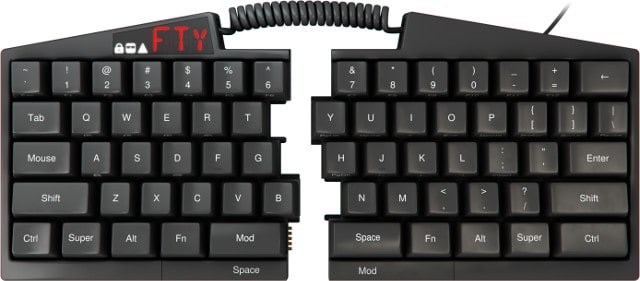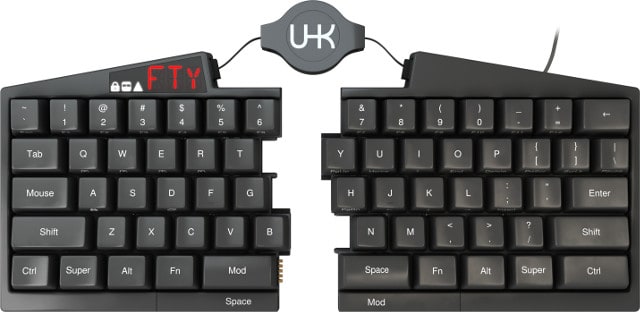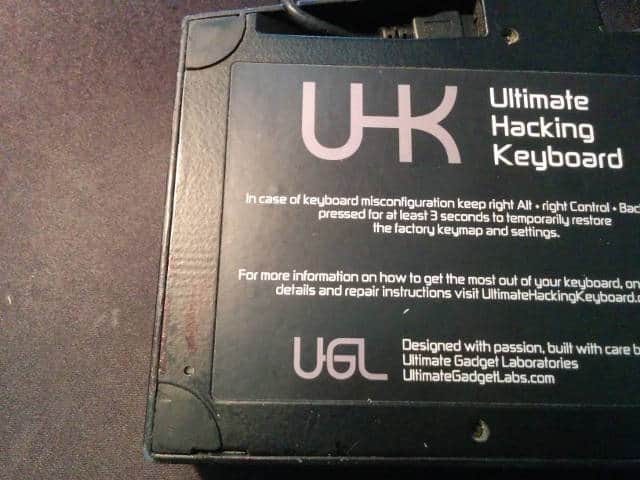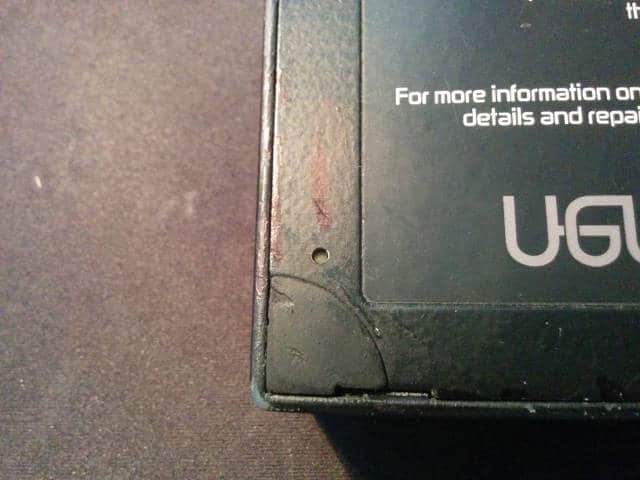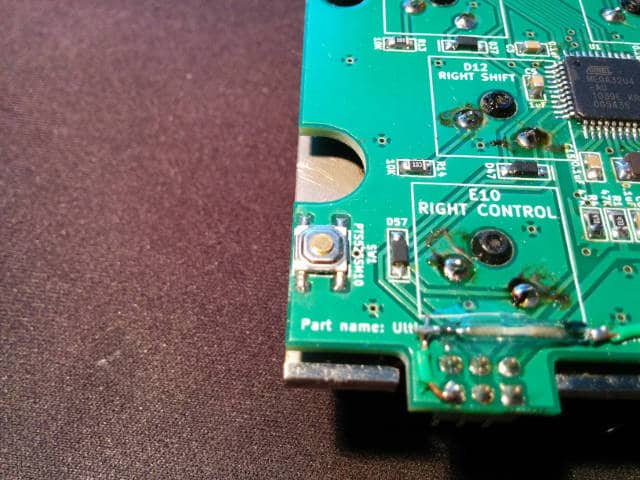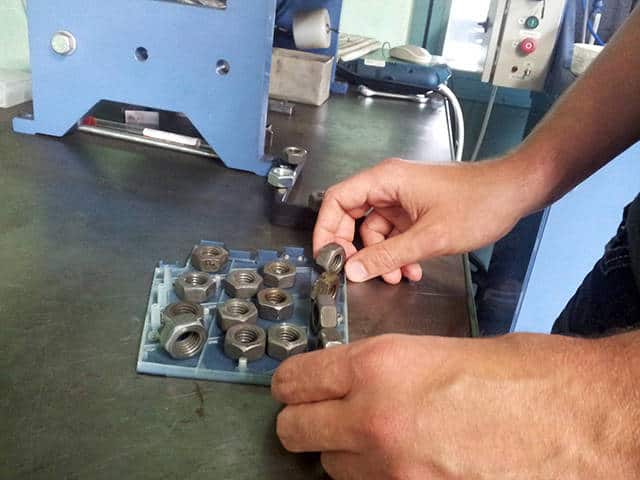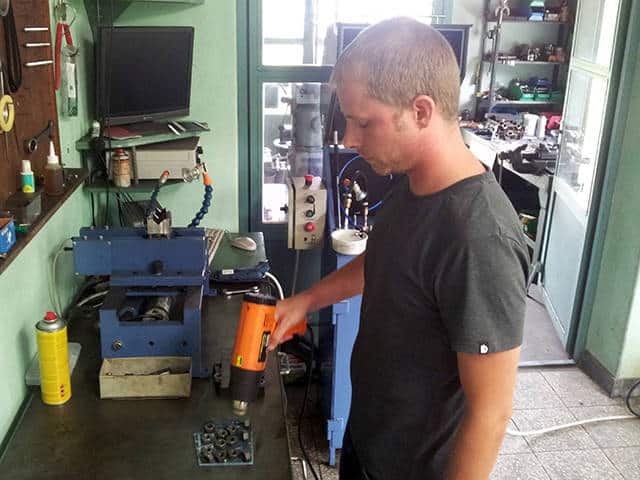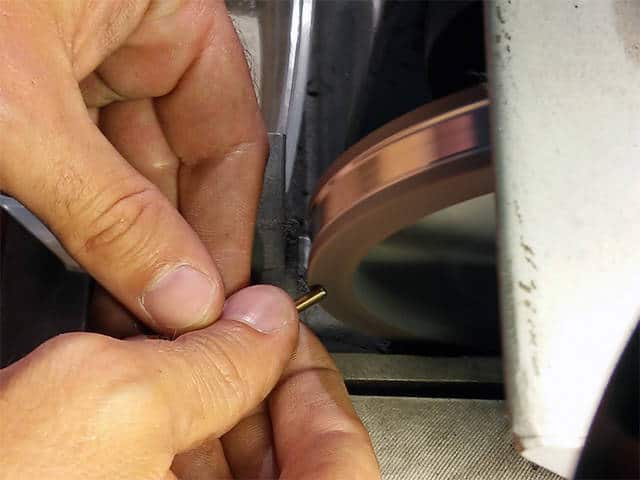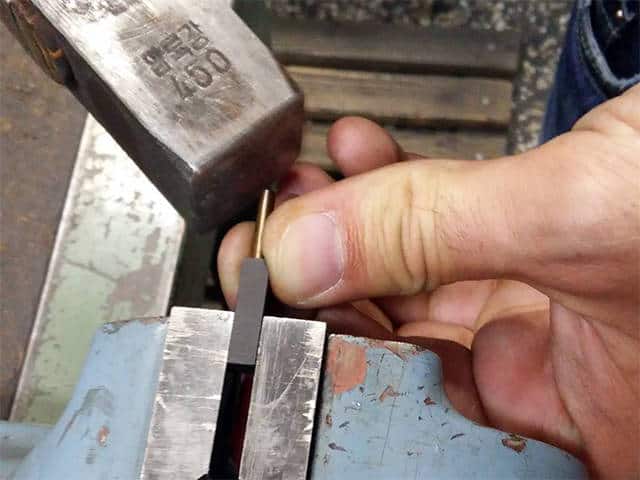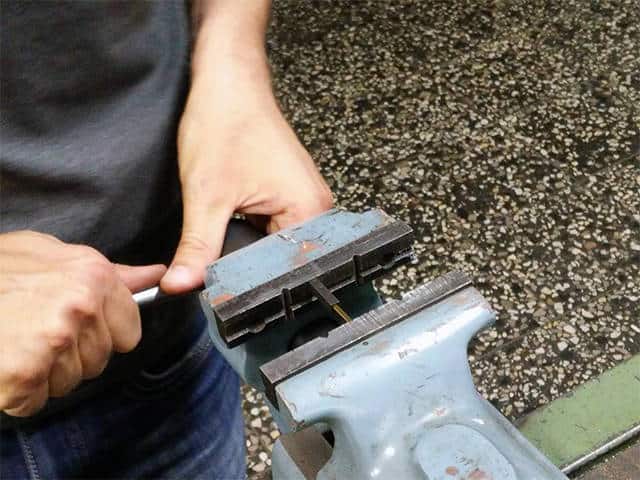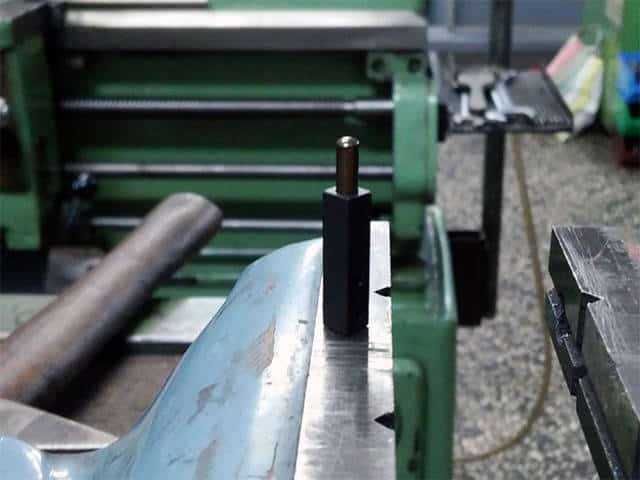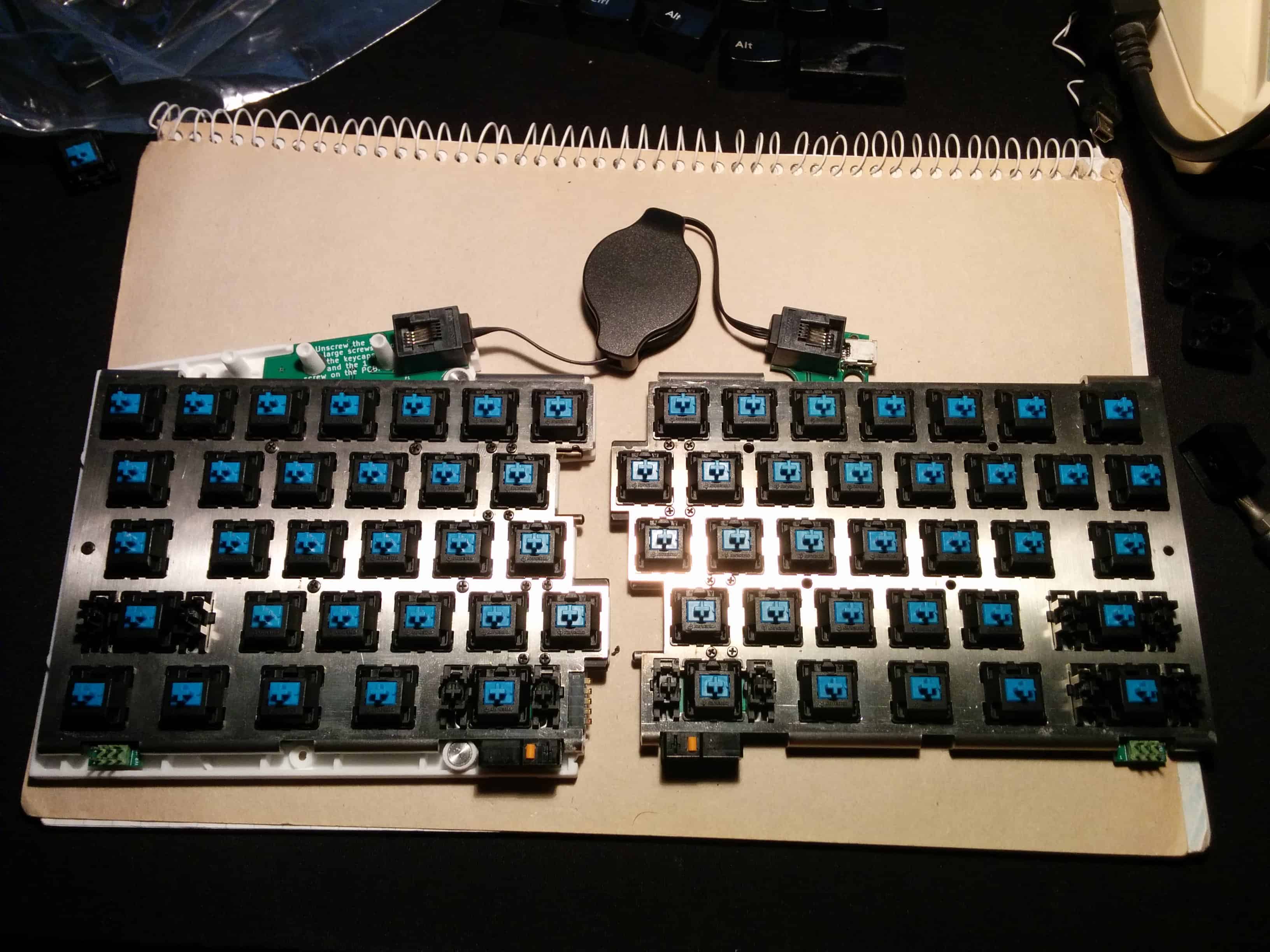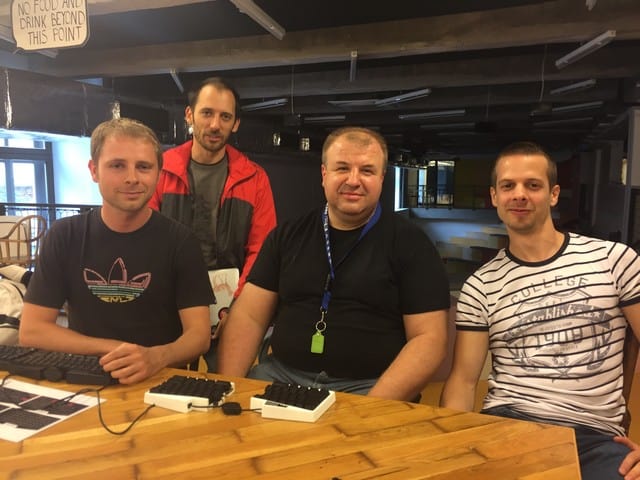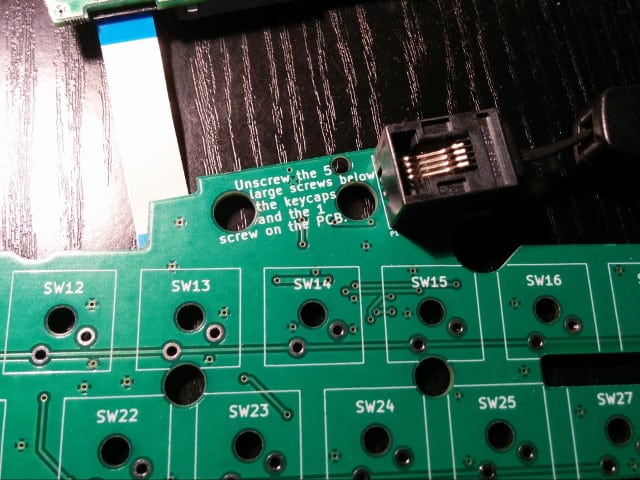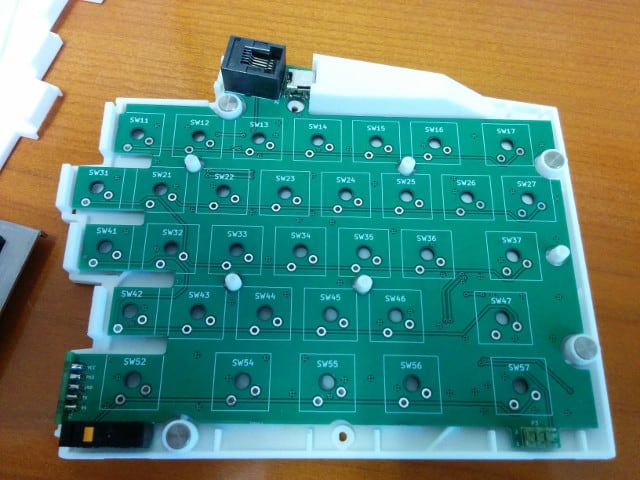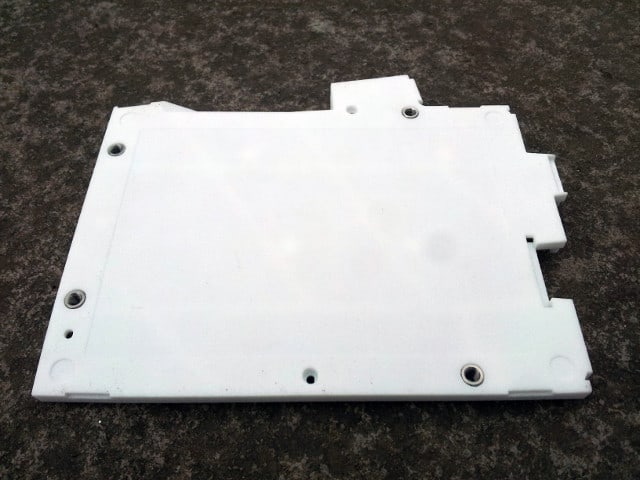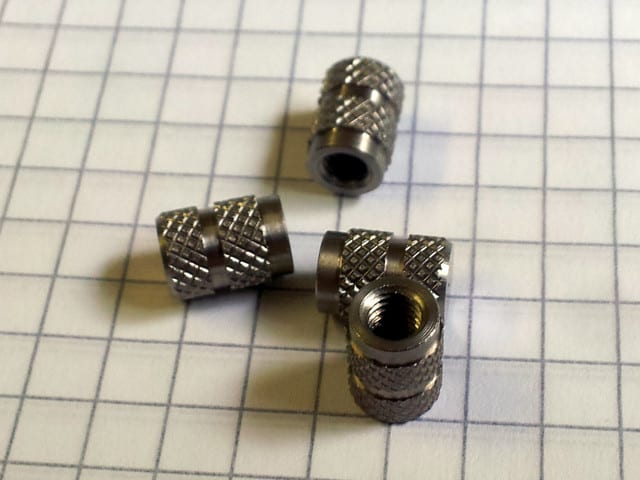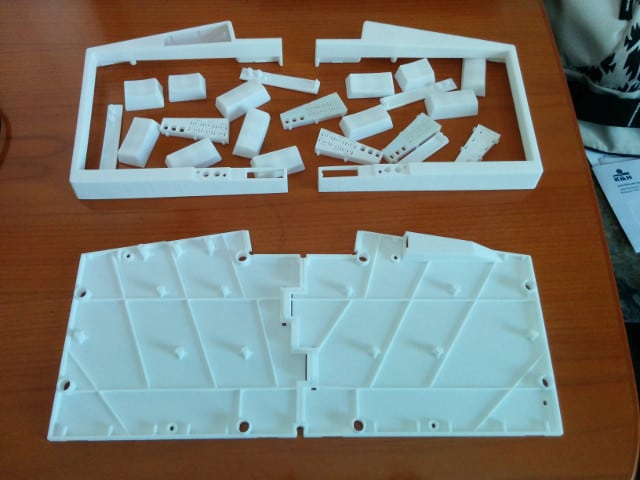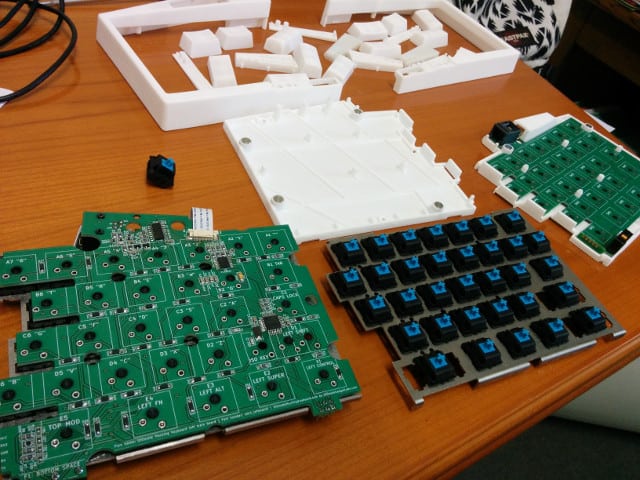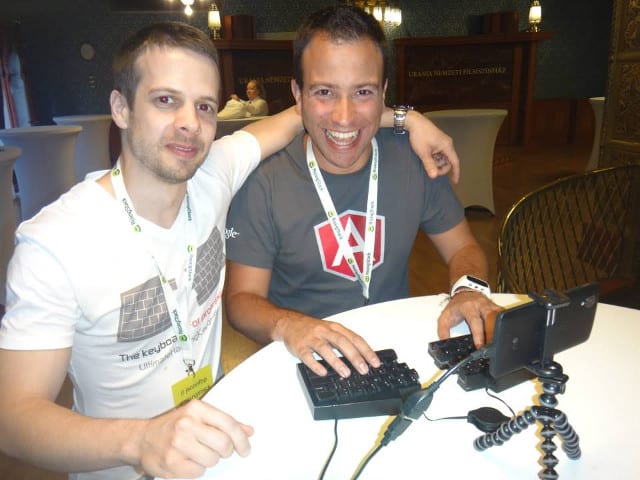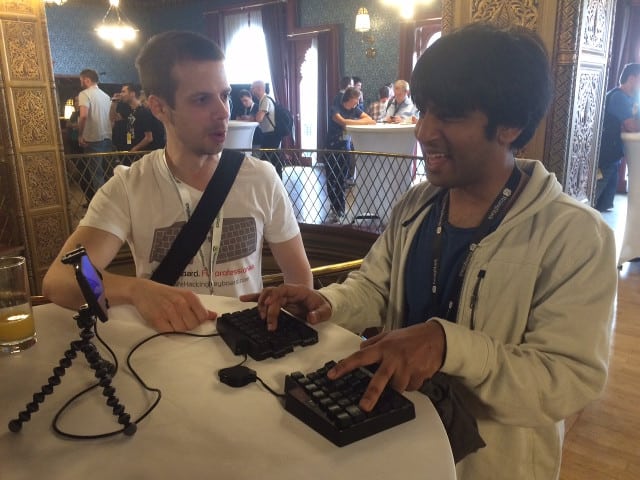Where should the "6" key be?
Some of you have told us that we're doing it wrong, because the "6" key should be on the right keyboard half, not on the left. In reality, the situation is more nuanced than that, and the placement of the "6" key was a conscious design decision on our part.
US people are taught to press the "6" key with the right index finger, but not all countries are created equal. For example, in Hungary, we're taught to press "6" with our left index finger. Go figure!
Let's examine this issue from an ergonomic standpoint. On the following picture, the keys of the home row on which our fingers reside are painted in red. There's a bright red line exactly between the left and right block of these keys. The "6" key is painted blue. As you can see, the bright red line is rightward of the center of the "6" key which means that given its position, it's more ergonomic to press it with the left index finger.
Now let's take a look from an aesthetic standpoint. Here's the actual UHK layout where the "6" key is on the left keyboard half.
And here's the alternate layout featuring the "6" key on the right keyboard half.
It's apparent that the former layout is way more symmetric.
There's even more to this topic; You're welcome to read the relevant thread on Deskthority which I started a while back when thinking about this issue. Those folks know a thing or two about the ergonomics and history of keyboards.
